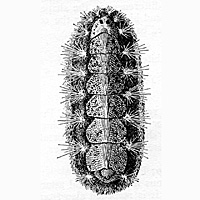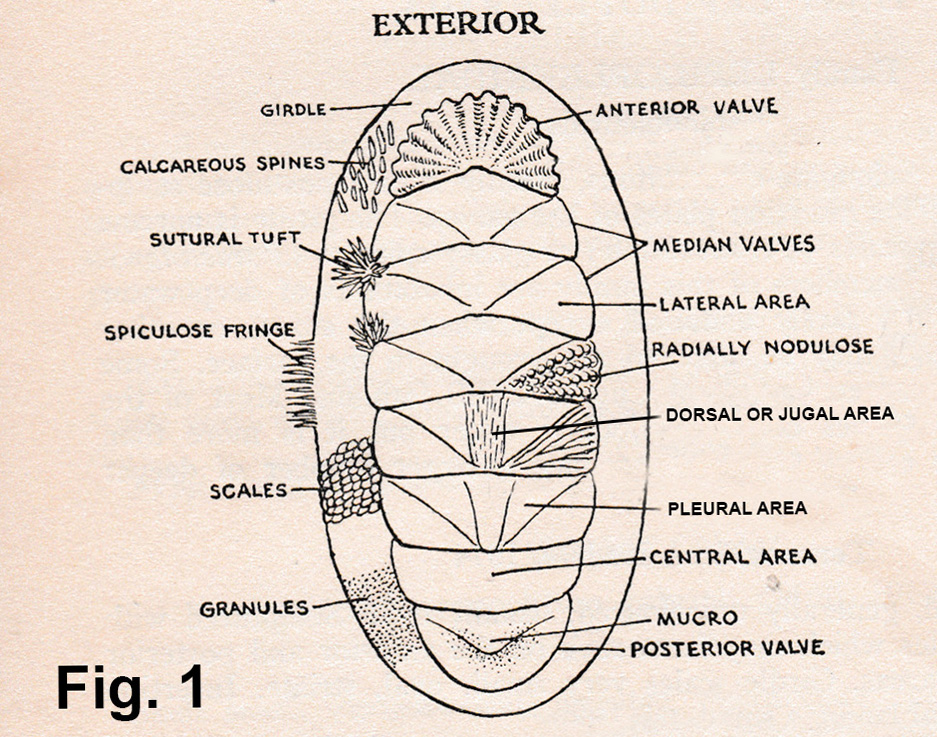|
< Previous family introduction |
|
|||||
 |
Family Acanthochitonidae Acanthochitonid chitons
|
|||||
|
The members of this family are distributed wordwide in tropical and temperate seas. They vary from small to very large animals, up to 360 mm in length. In NSW there are 12 species, all except one being under 25 mm in length, with the exception reaching 72 mm. In this family the girdle may be narrow and the valves wide, or the girdle may be wide with small valves embedded in it. The girdle is either naked or spiculose, covered with calcareous spines varying in size and shape. There are also tufts of spicules in the girdle, one beside each valve junction and several around the anterior and posterior valves. The girdle tufts are a useful identification feature, but are fragile and often broken or lost in dried or preserved specimens. The NSW species live in a variety of habitats. Some live cryptically under rocks intertidally and sub-tidally, while one species, Acanthochiton retrojecta, lives on the surface of exposed rocks between low tide and mid-tide, hidden in cracks and other places where it obtains shelter. In contrast, Notoplax species live and feed on sponges in the subtidal zone. Animals of this family have separate sexes, and in at least some species, shed eggs and sperm directly into the sea. Family References
Coverage All species of the family known from NSW are detailed here, with the exception of the following two species:
Identification Notes A chiton's shell is composed of 8 parts, or valves, held together by a fleshy girdle, as shown in Fig. 1. The valves are an anterior valve, 6 median valves, and a posterior valve. The median valves are divided into areas by sculpture. The dorsal, or jugal area, is along the top of each valve, sometimes as a well-defined ridge, and it transitions into a pleural area on each side. If the jugal area is not divided from the pleaural area the combined area may be referred to as the central area. The lateral areas are on each side of the valves, broadening towards the edge, and are often sculptured with radiating ribs. The pleural and lateral areas are of different sculpture, usually separated by a line or ridge, with the lateral area usually raised. The valves are surrounded by a fleshy girdle, in which the edges of the valves are embedded. In most families the edges are extended as insertion plates the shape of which are characteristic of the family. The insertion plates are dissected by slits at their edge which are approximately constant and diagnostic for a species. The insertion plates and their slitting are important characters for identification, but in this work they are not described, relying on valve and girdle sculpture instead. Iredale & Hull (1927) describe the insertion plates for all the species covered here if that degree of detail is needed. Girdle sculpture is one of the main externally visible characters useful for identification. The girdle may be narrow or wide, smooth or ornamented with scales, or baring hairy processes or spines of various sizes and densities.
Fig. 1: Terminology for external morphology of chitons (After Macpherson & Gabriel, 1962, p. 1). |
